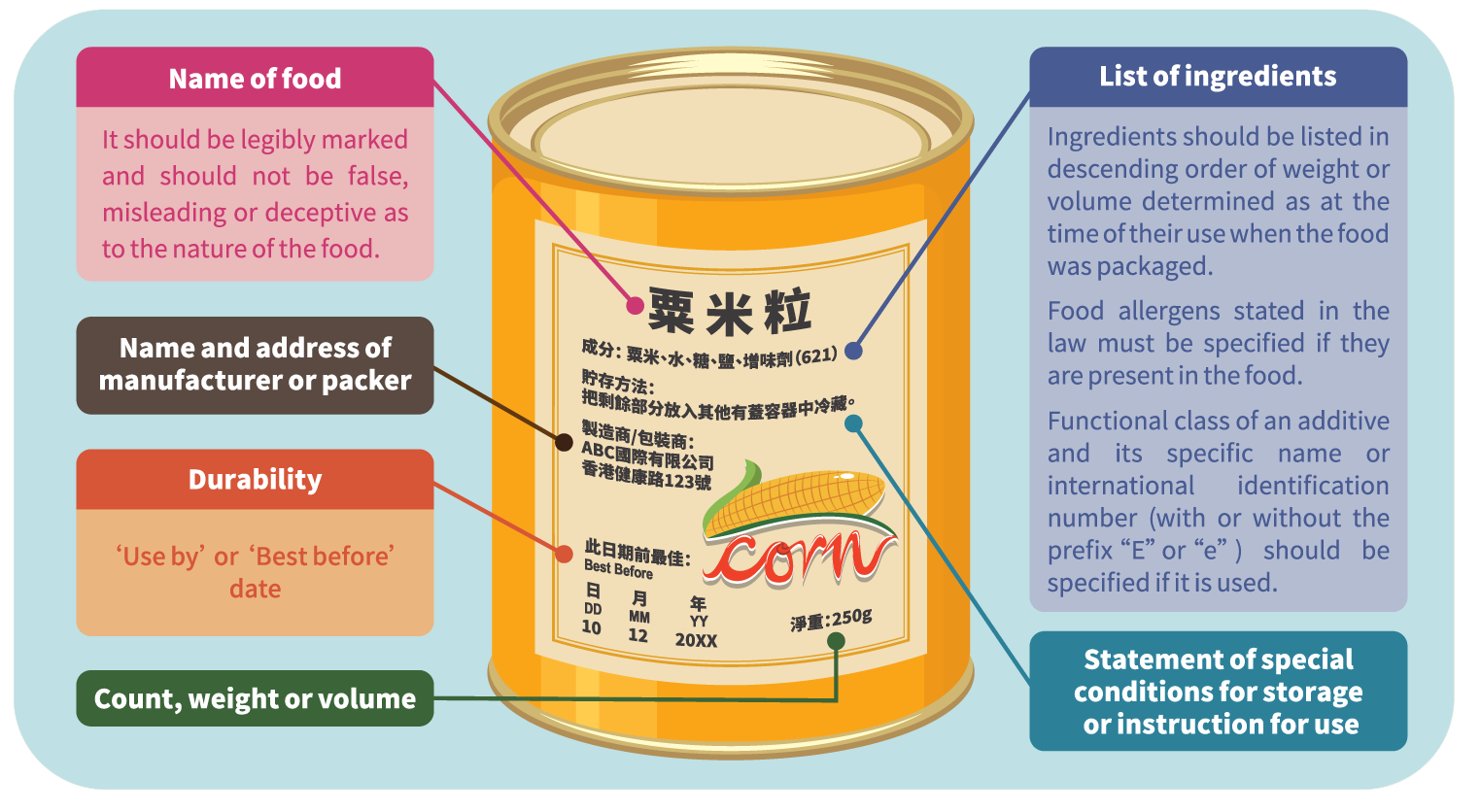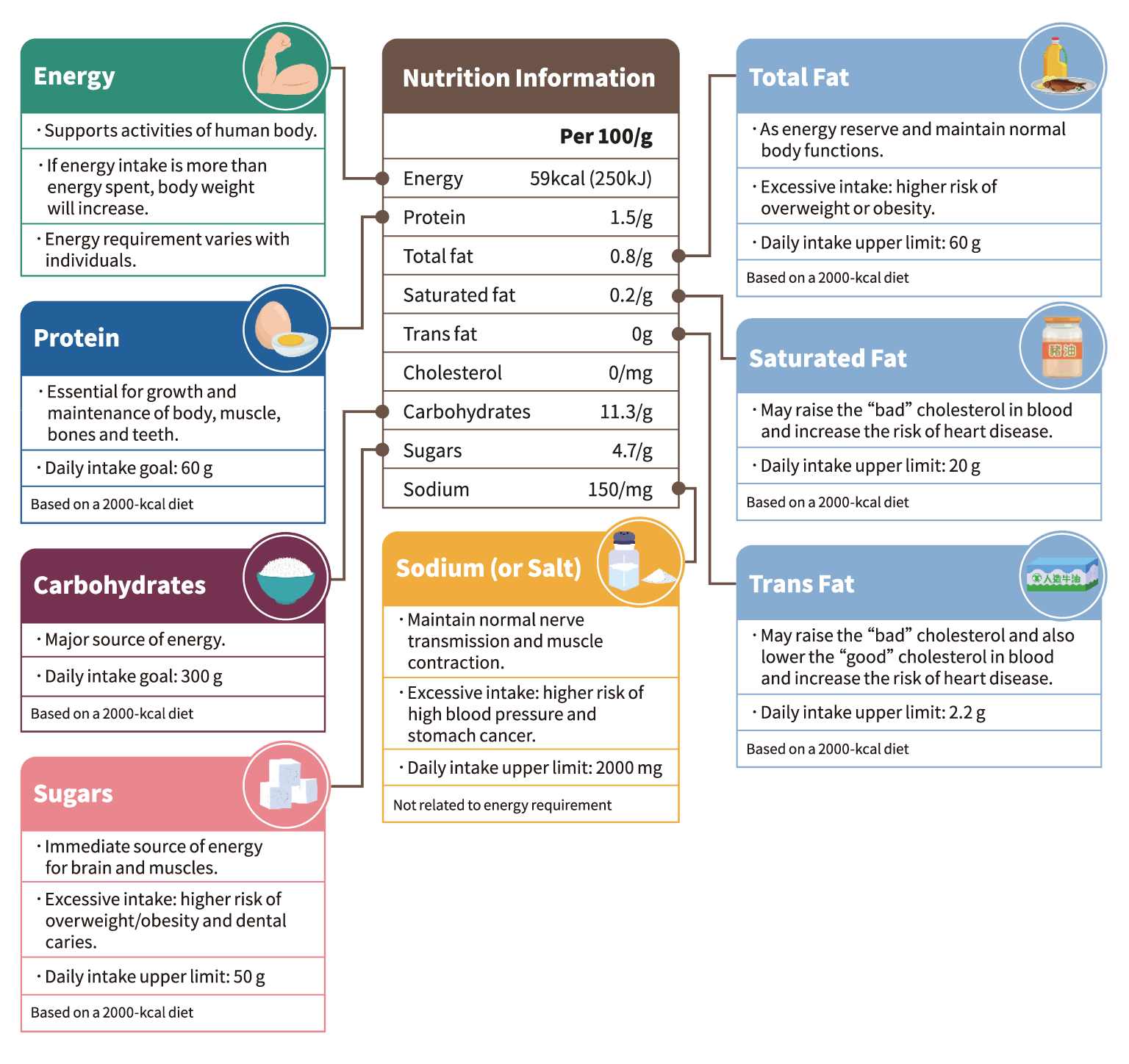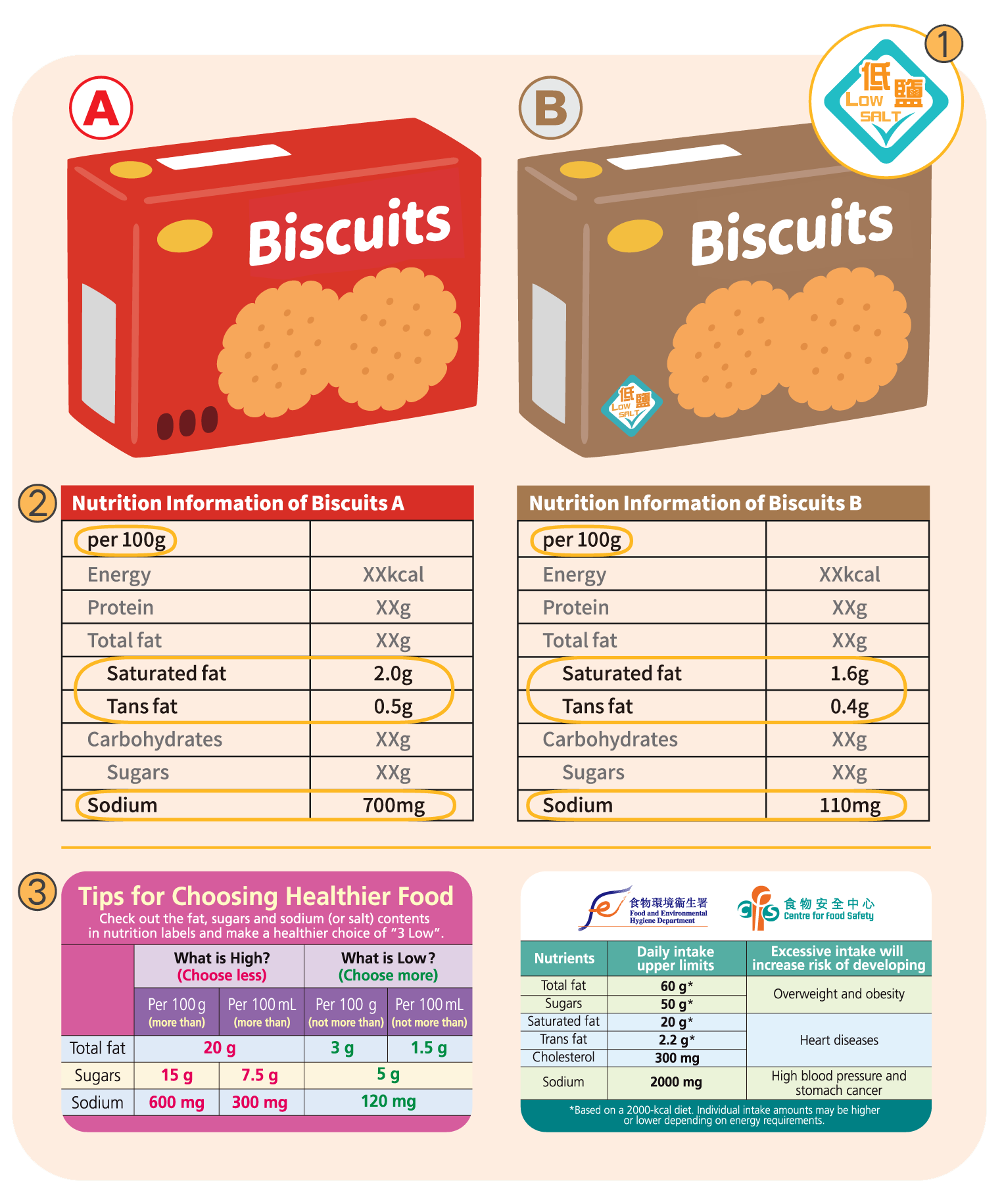What is a Food Label?
Food labels are an important channel of communication, informing consumers what a product is, what it contains, and how to handle, prepare and eat it safely. As society shifts from buying food directly from producers to buying prepackaged food from around the world, it is important to provide consumers with reliable and accurate instructions.

Why are food labels useful?
Food labels serve multiple purposes. It prevents food sellers from misrepresenting information on packaging as they are required by law to ensure that the information shown is accurate. In addition, labelling the expiration date and best before date can help reduce food waste. Given that diet-related non-communicable diseases such as diabetes and heart disease are increasing the healthcare burden around the world, nutrition labels are also useful tools to assist consumers in making healthy food choices.

What is a nutrition label?
Nutrition labels are part of food labels. The "1+7" on the nutrition label refers to the energy value and the content of seven specified nutrients, namely protein, carbohydrates, total fat, saturated fat, trans fat, sodium and sugar.
| Energy |
|
|---|---|
| Protein |
|
| Carbohydrate |
|
| Sugar |
|
| Total fat |
|
| Saturated fat |
|
| Trans fat |
|
| Sodium (or salt) |
|
Use of nutrition labels to reduce the risk of non-communicable diseases
To reduce the risk of non-communicable diseases, we should pay special attention to the amount of fat, sugar and sodium in our food choices.
| Fat | Fat can be broadly classified into saturated fat and unsaturated fat. Among unsaturated fat, trans fat has particularly adverse effects on health. |
|---|---|
| Sugars | Sugars are also a sub-set of carbohydrates, which can provide immediate energy for muscles and the brain. Excessive intake of sugars can lead to obesity and dental decay. |
| Sodium | Sodium is an essential mineral for the human body. It is required for nerve transmission and muscle contraction. Excessive intake of sodium can lead to hypertension and cardiovascular diseases. |
Now, let's practise choosing foods with low or lower sodium, saturated fat and trans fat by using two packs of biscuits with hypothetical nutrient profile according to the three tips below.

- Any nutrient content claim?
To facilitate the public to select foods with less salt or sugar, some products may display the labels under the 'Salt / Sugar' Label Scheme for Prepackaged Food Products. In this example, Biscuits B with the claim "Low Salt" is a better choice than Biscuits A. - Compare nutrition labels
Use the same reference amount (e.g. sodium content per 100g) when making comparison. In this example, Biscuits B is a better option than Biscuits A because of lower sodium, saturated fat and trans fat. - Compare the nutrient intake with the daily intake upper limit
The Shopping Card designed by the Centre for Food Safety list the daily intake upper limits recommended by the World Health Organization. In this example, 100g of Biscuits B contributes 5.5% (i.e. 110mg/2000mg), 8% (i.e. 1.6g/20g) and 18% (i.e. 0.4g/2.2g) of the daily intake upper limits of sodium, saturated fat and trans fat respectively.